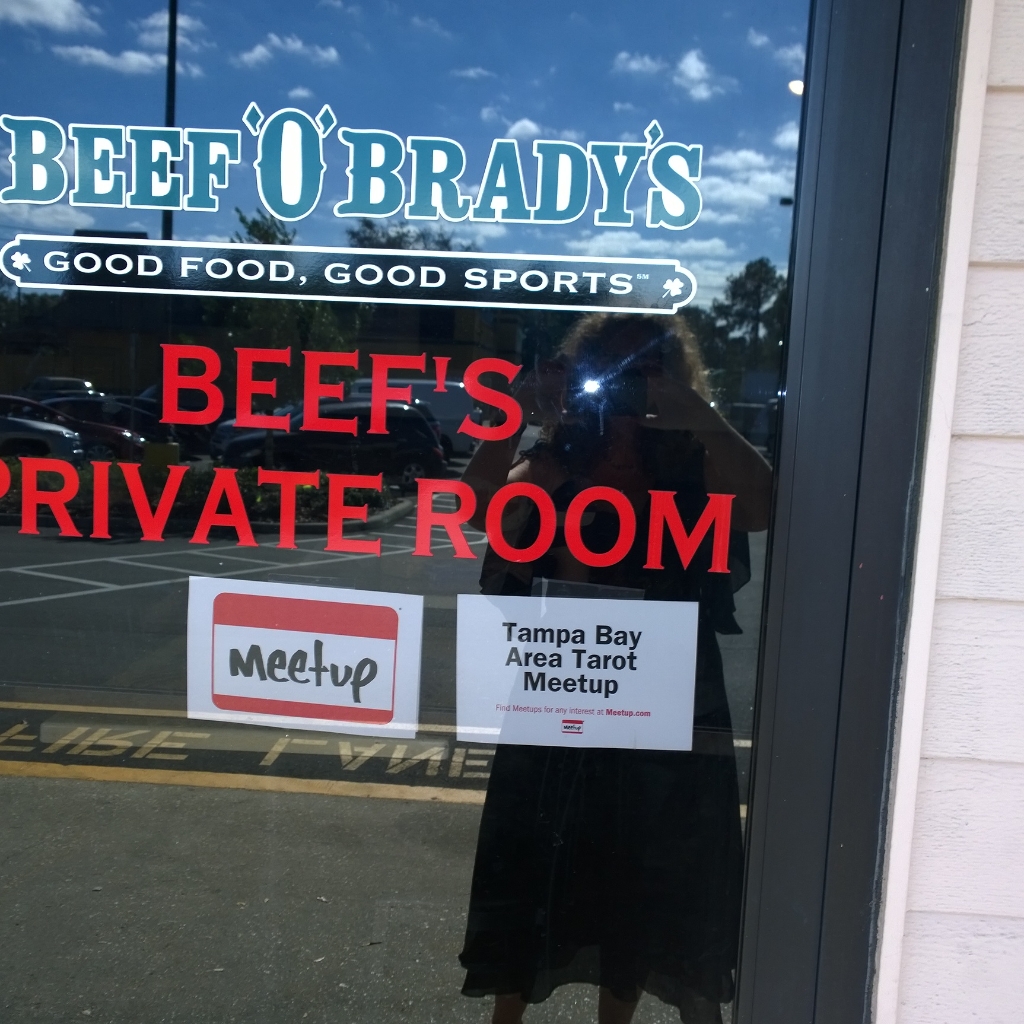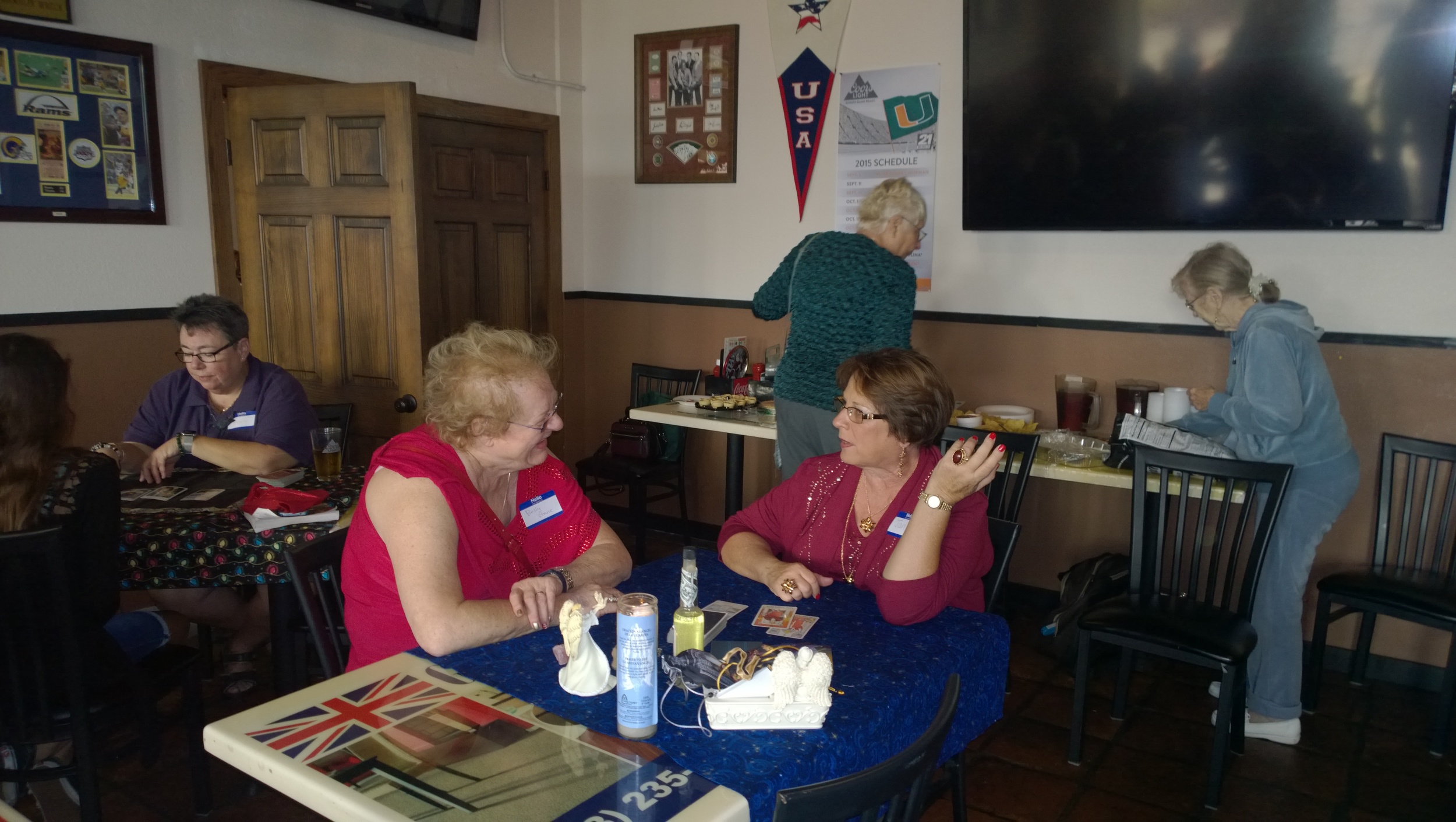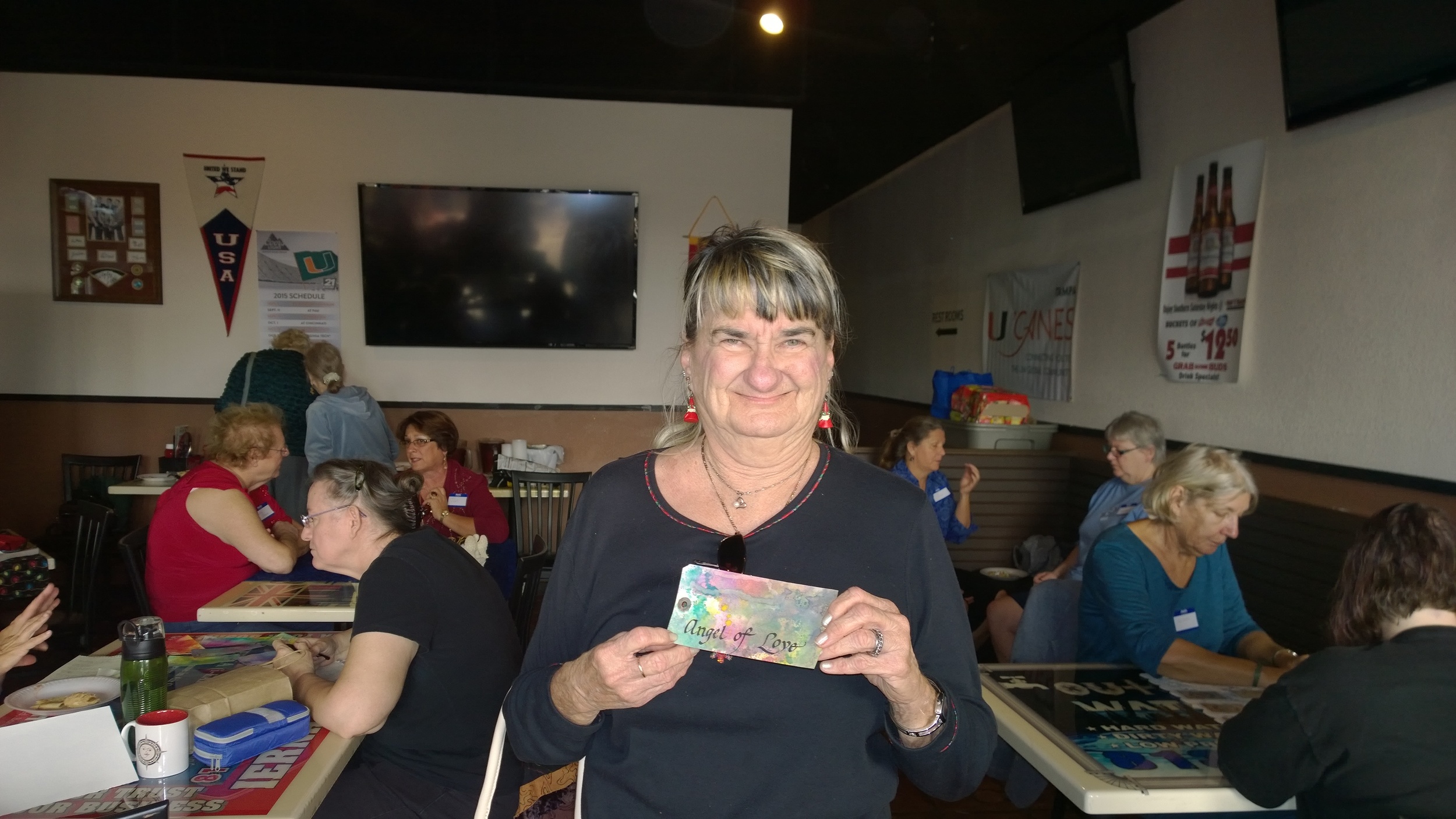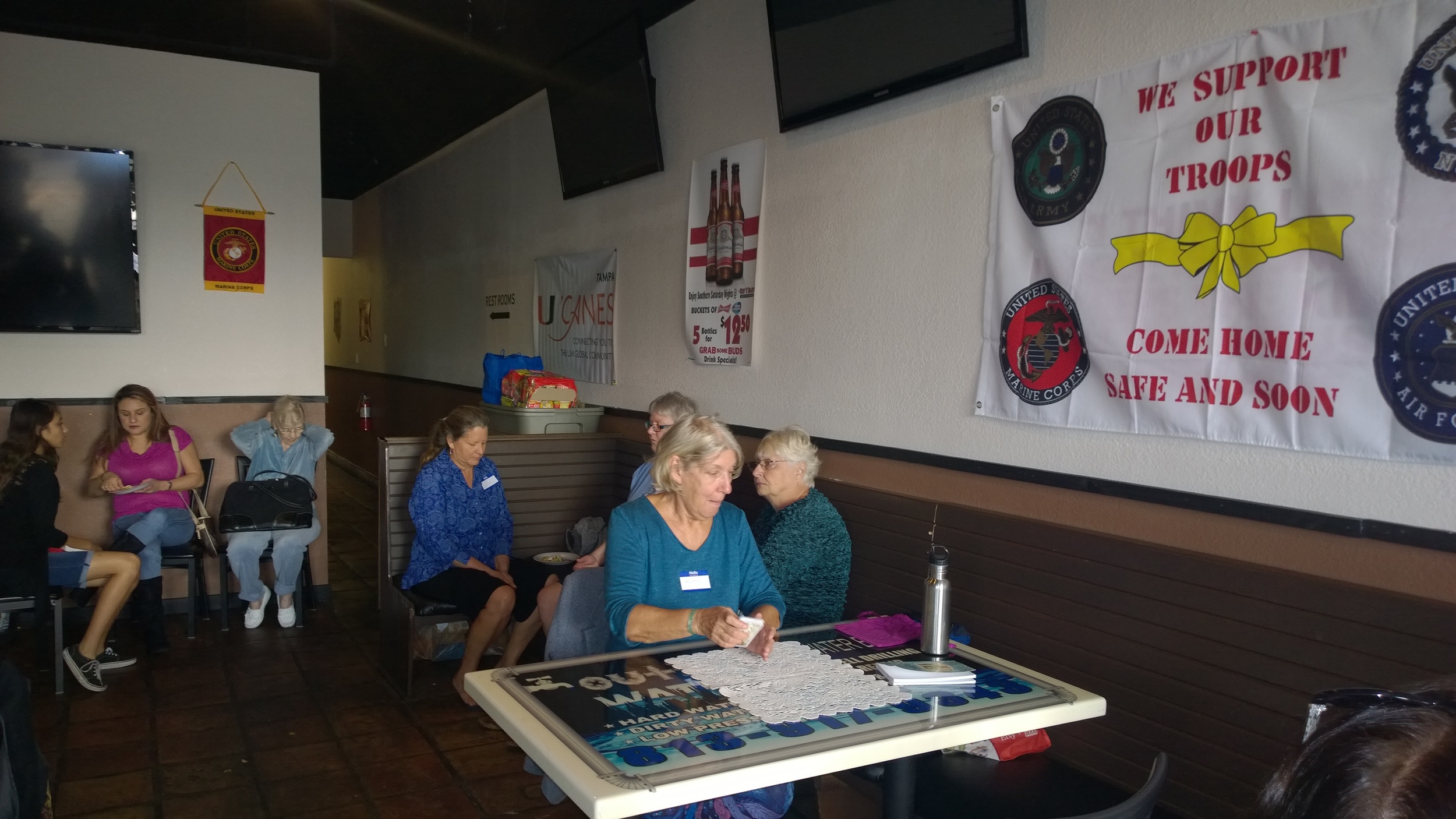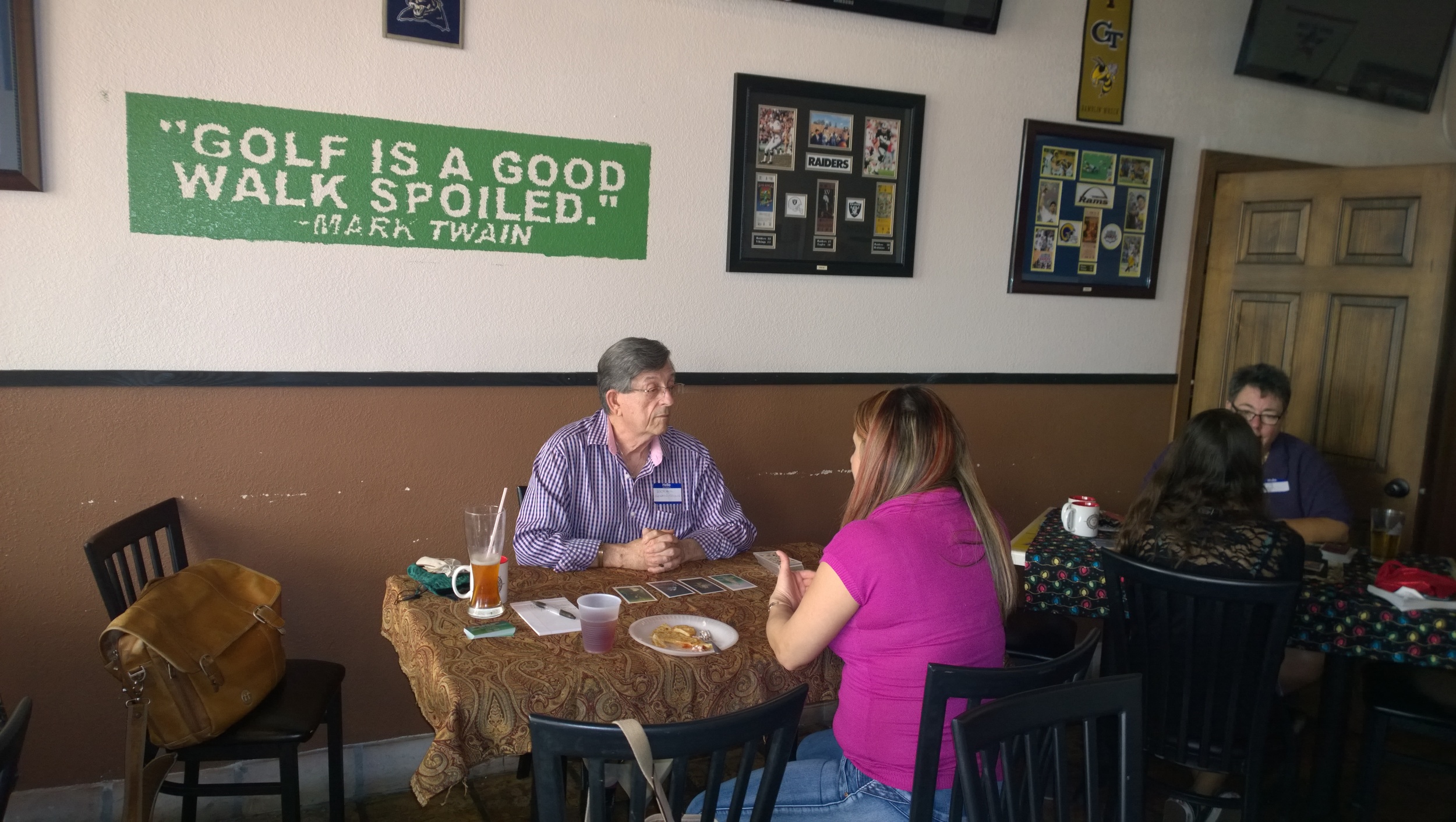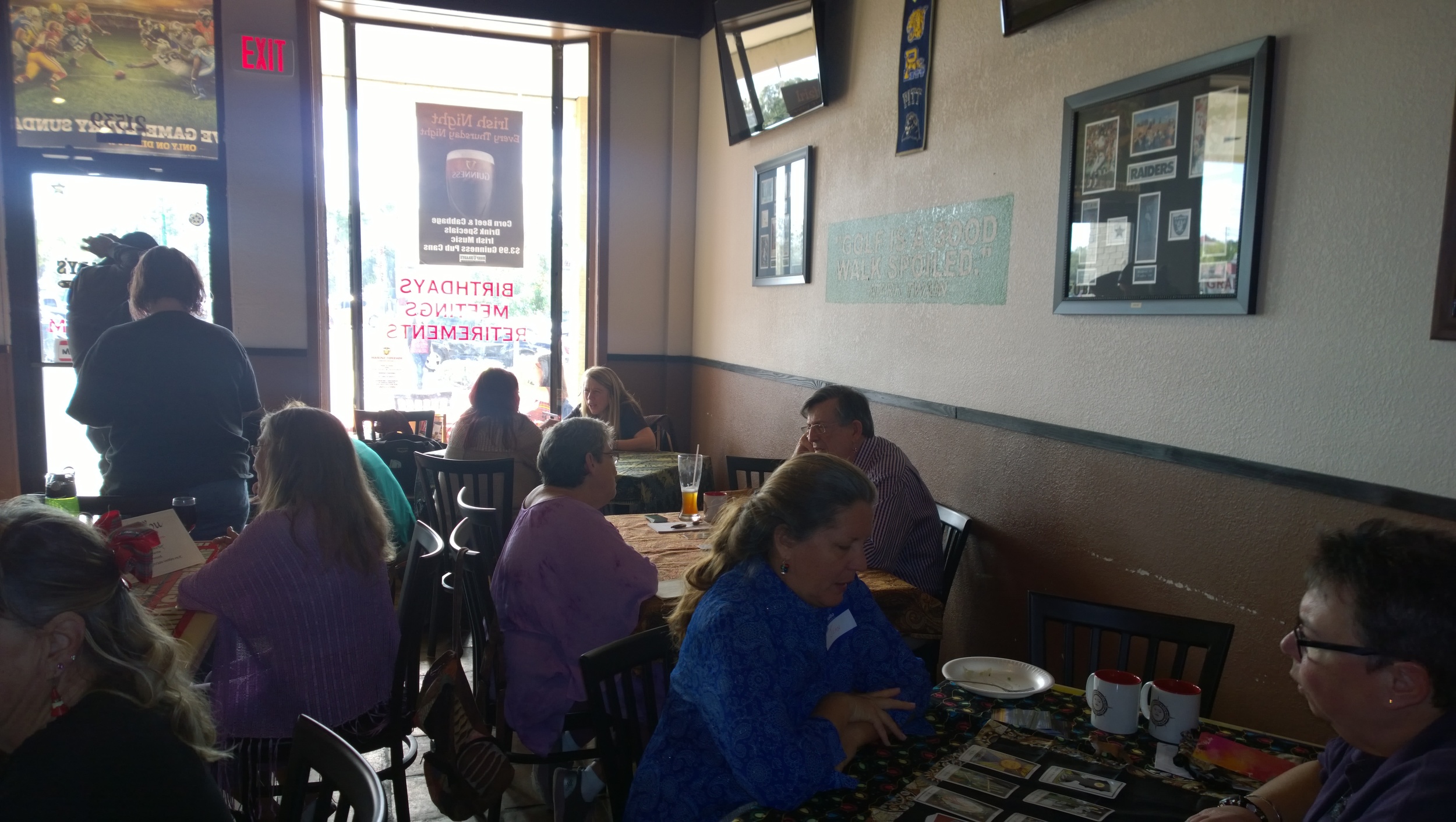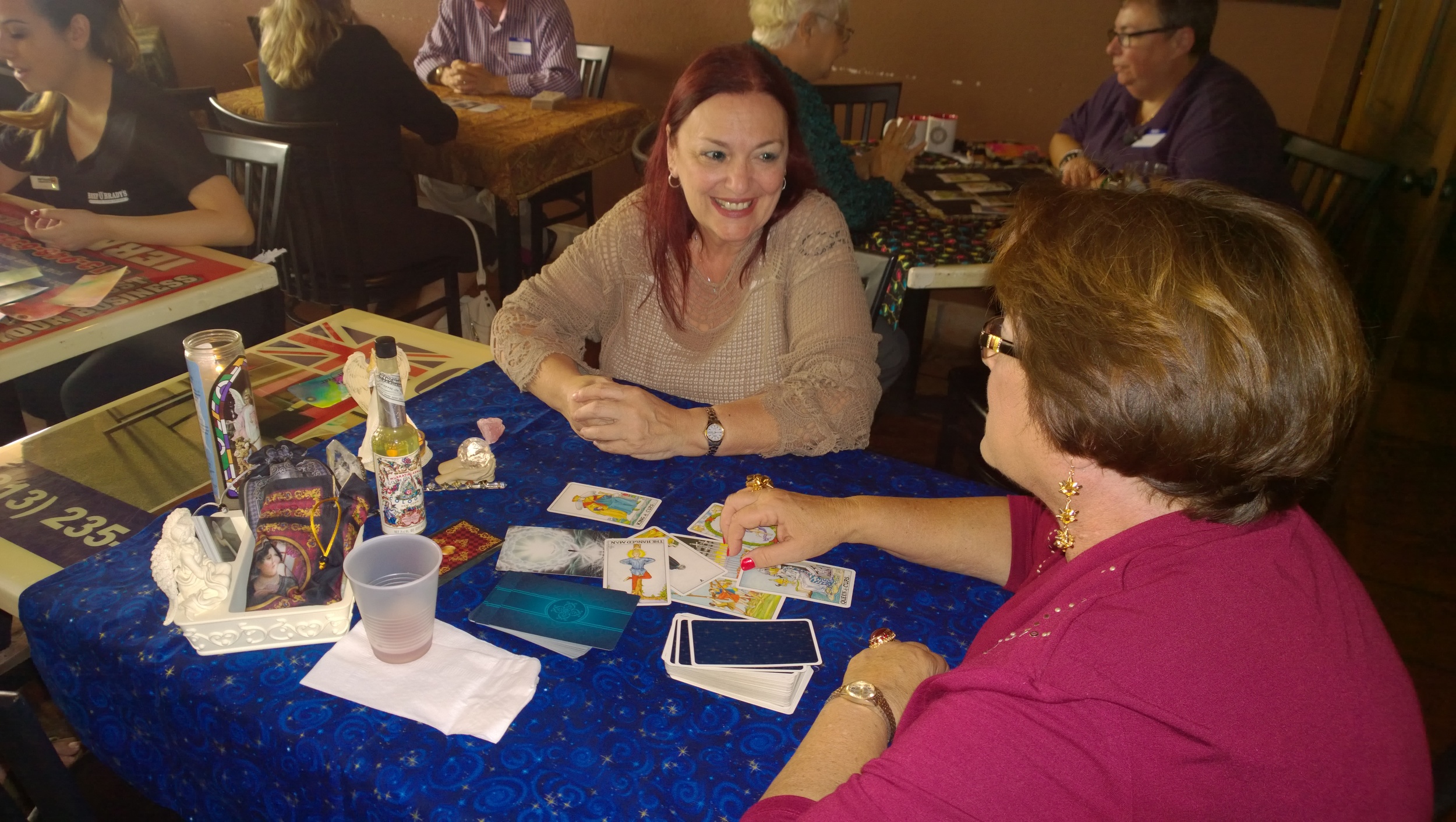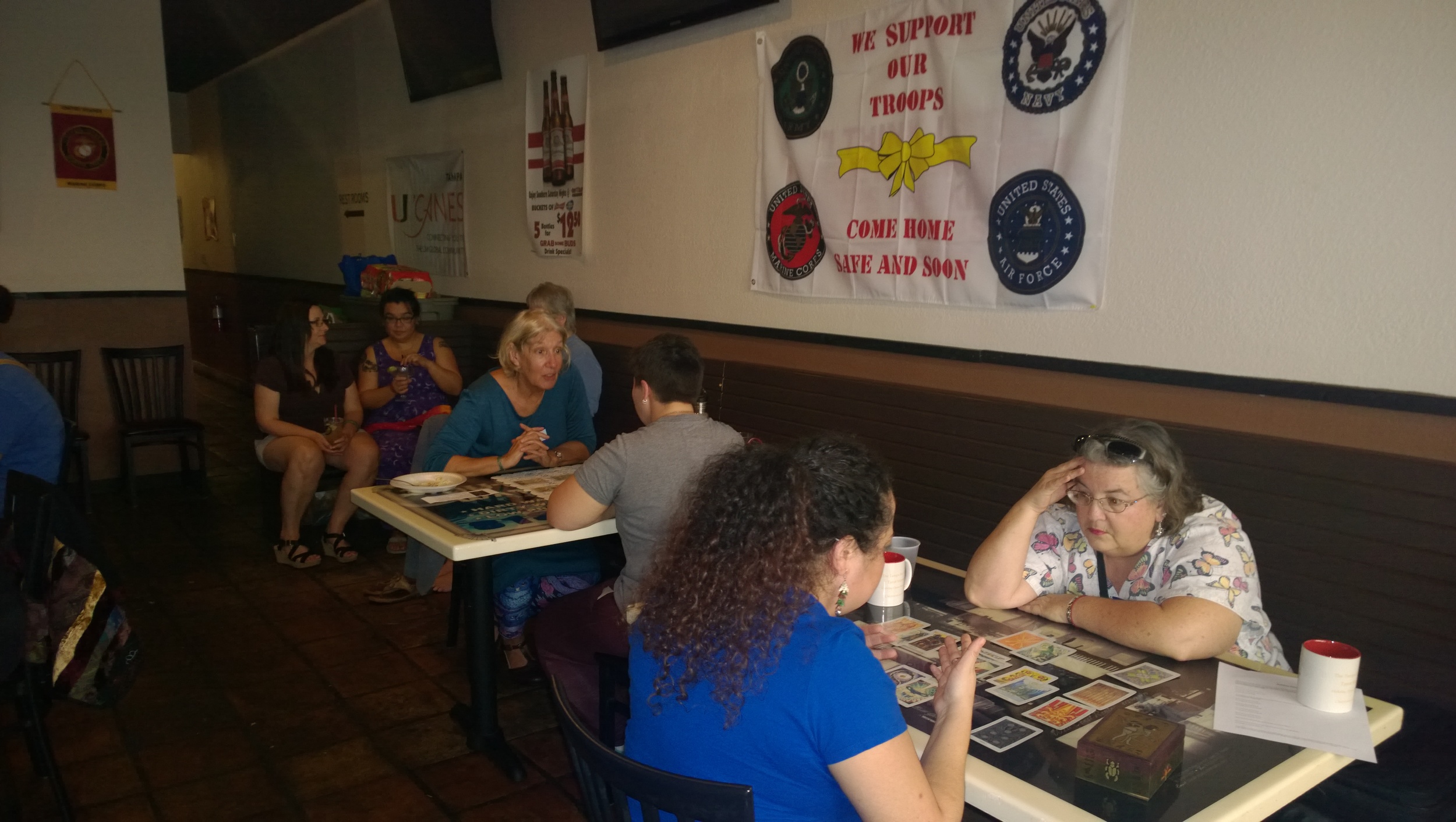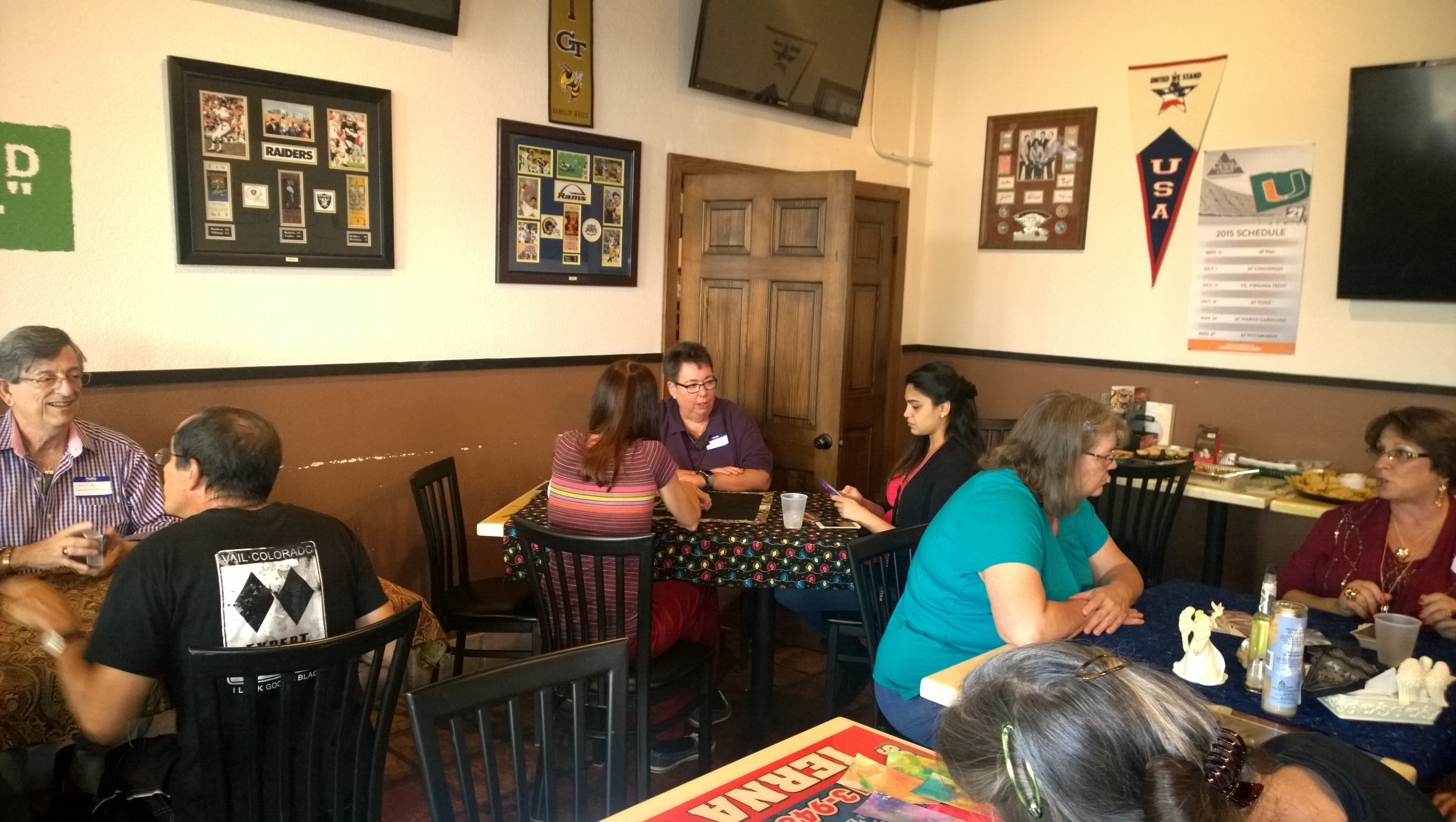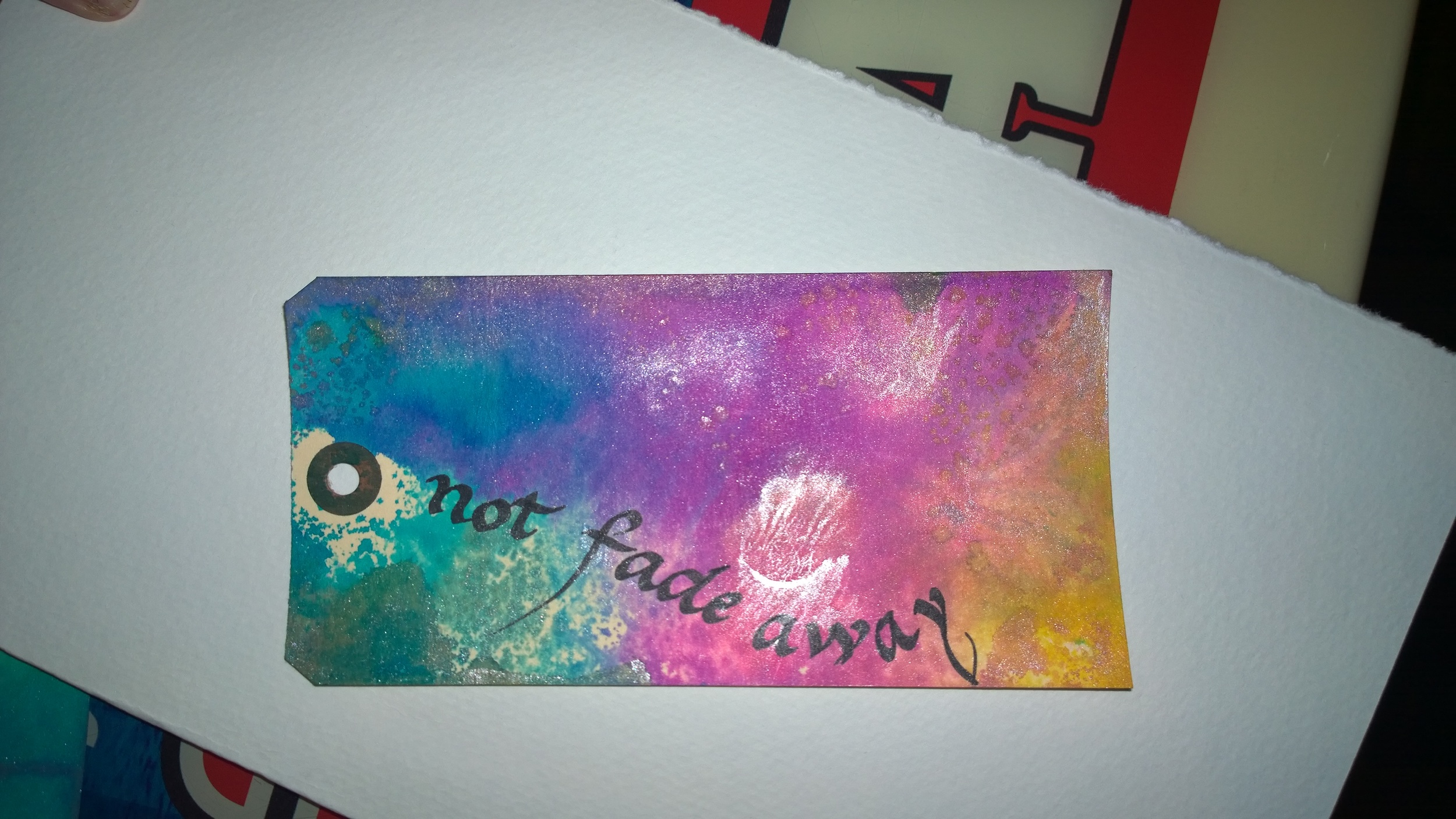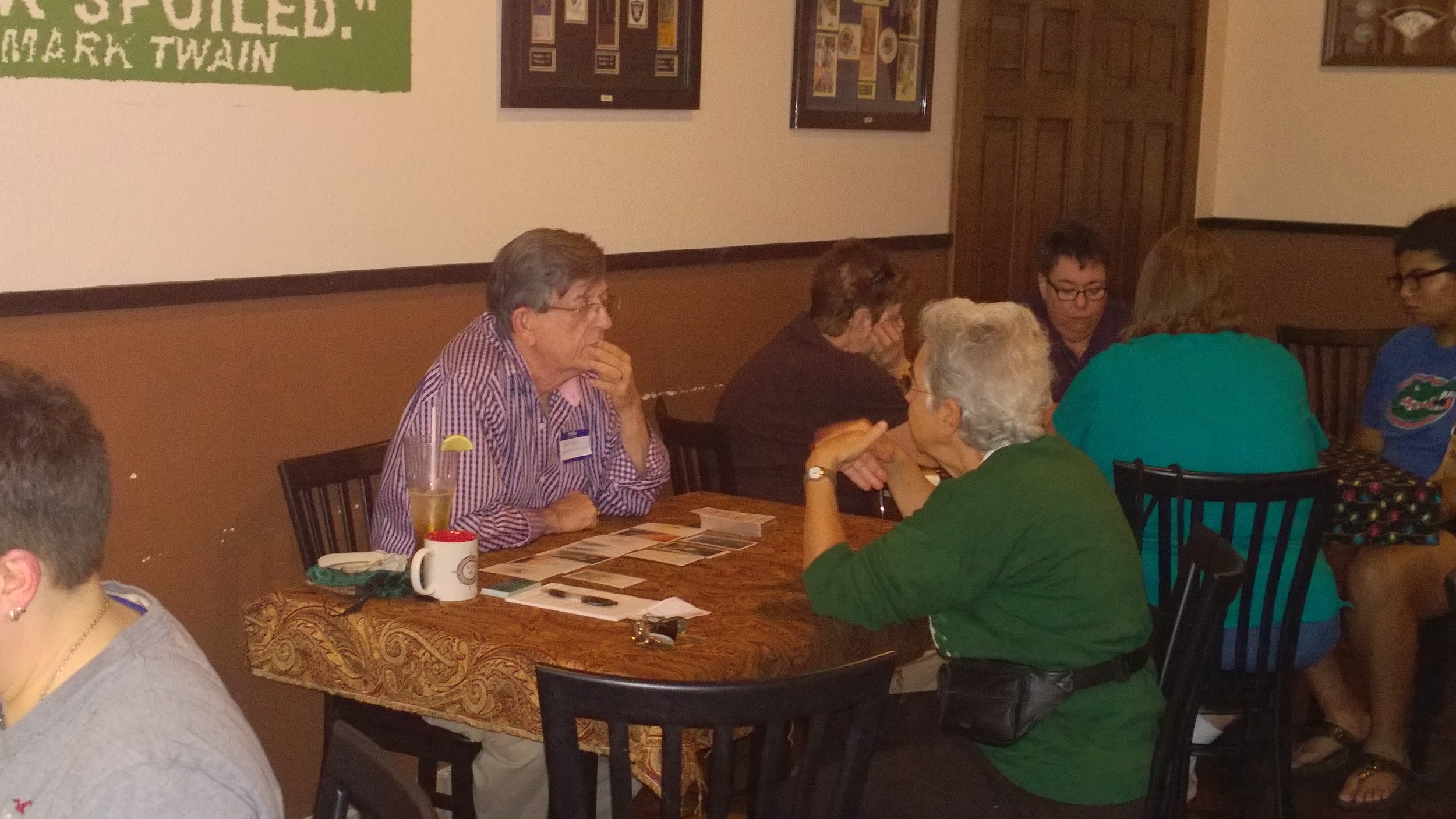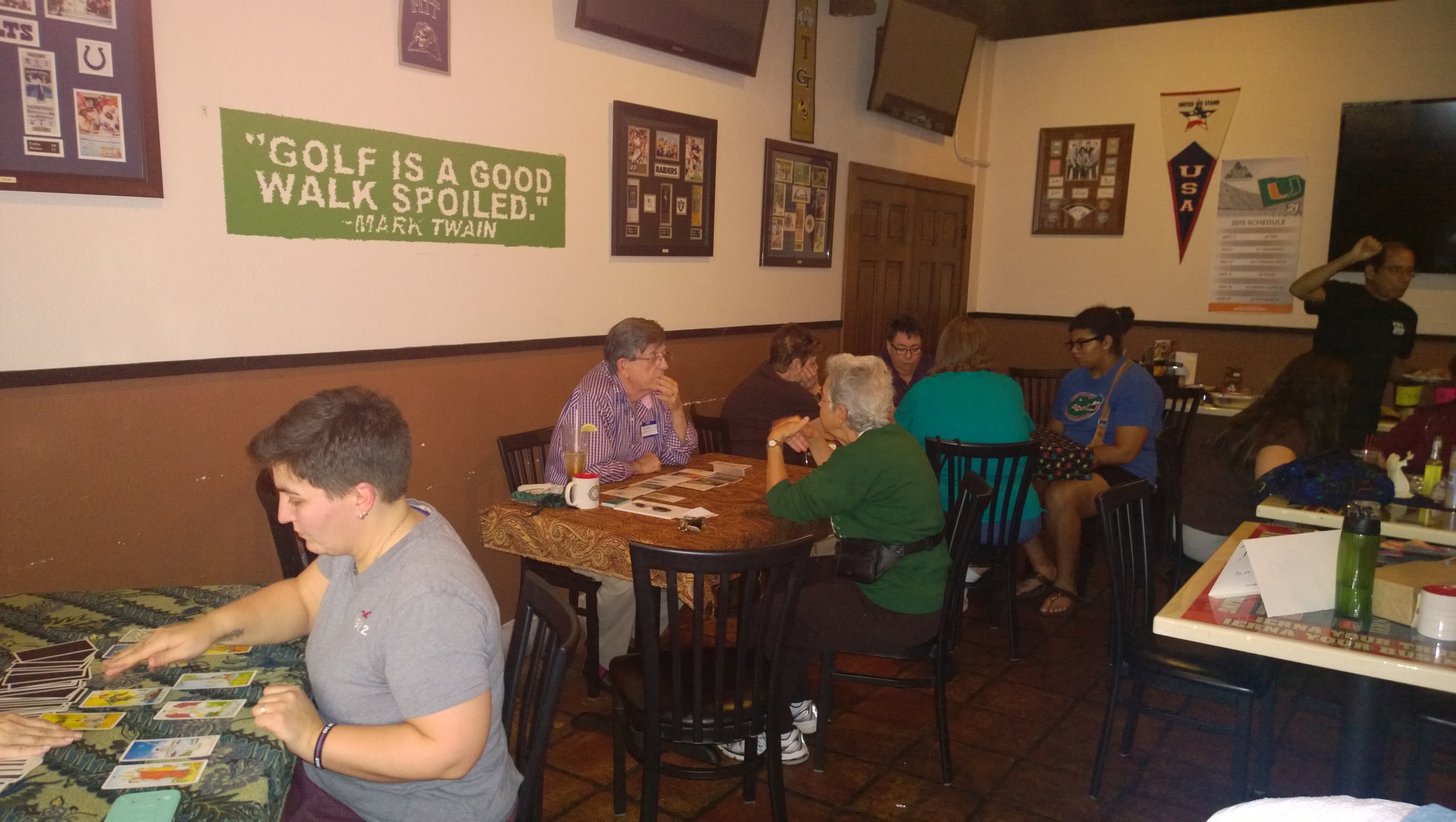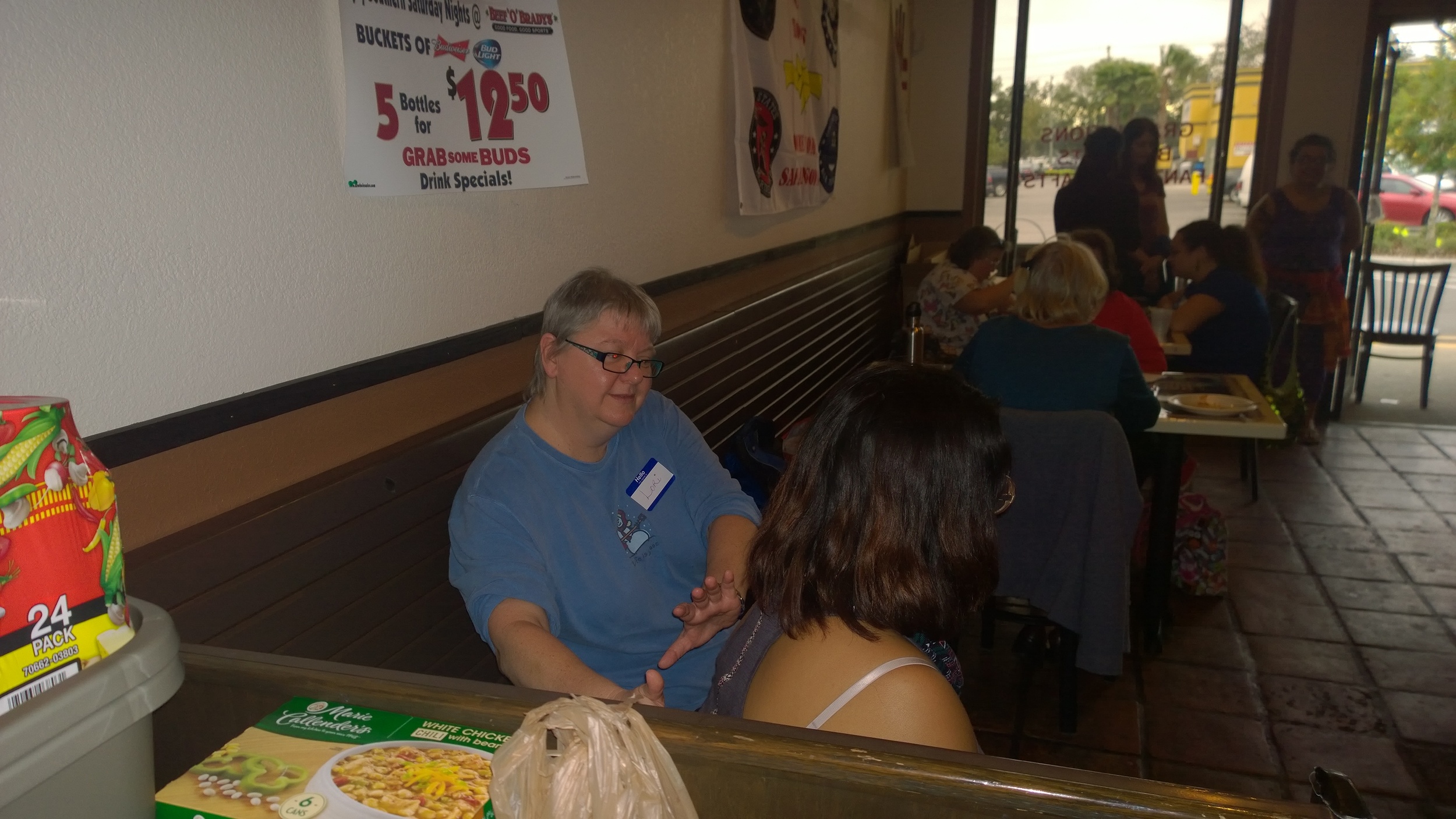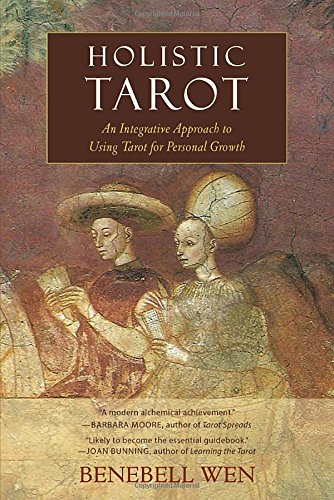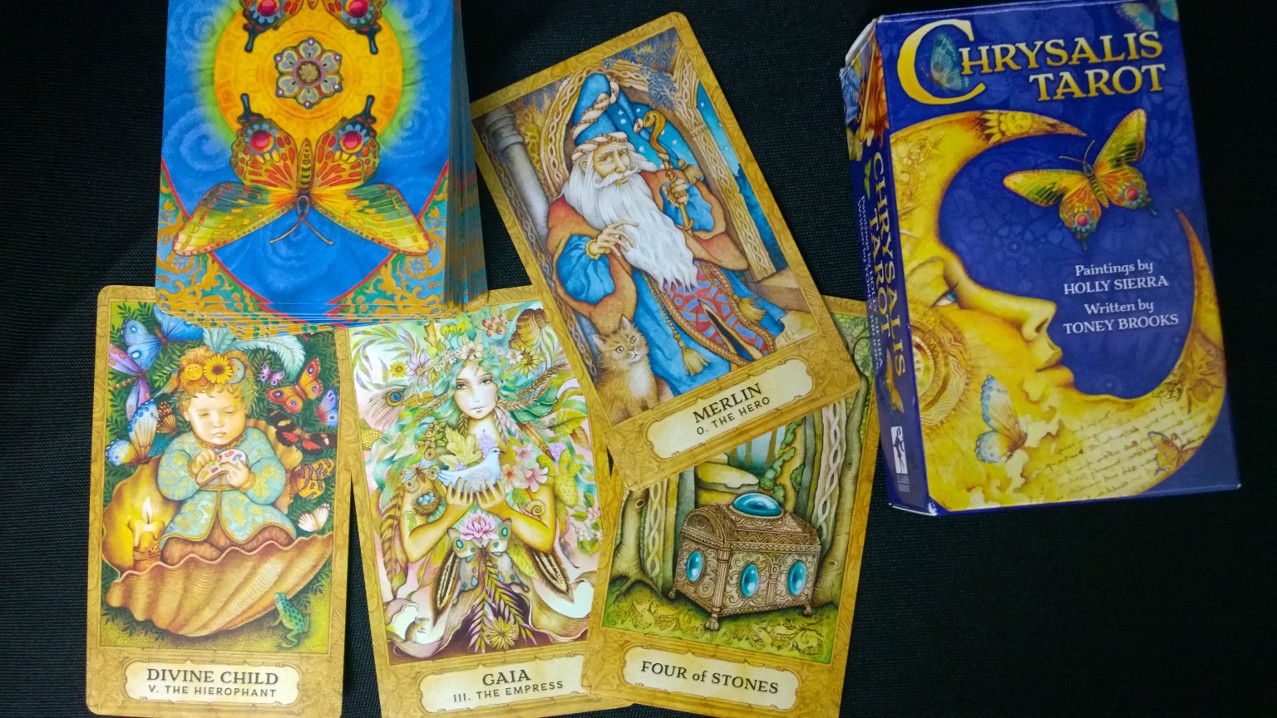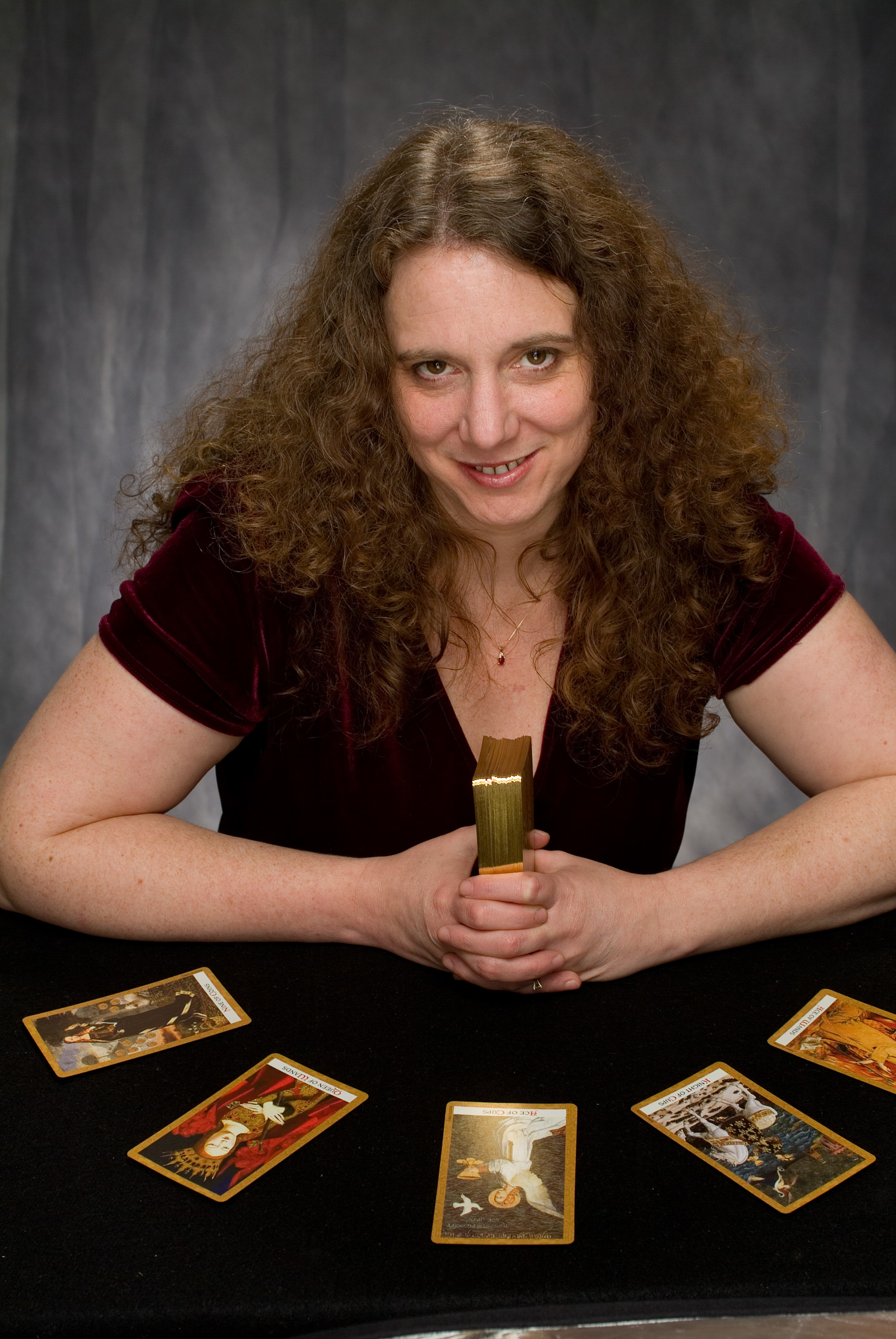
Welcome to my personal blog.
Here you will find my musings, thoughts and observations, all inspired by my experiences as a full-time professional tarot reader.
Another Successful Psychic Foodraiser: Holiday Open House 2015
The Tampa Bay Area Tarot Meetup's Holiday Open House was a huge success! Read about it, and see the pictures.
On December 20, 2015, I was able to revive an old and favorite holiday tradition of mine, the Holiday Open House.
Early in my career, the Open House was simply a day during the holiday season when I would give free readings and holiday snacks to anyone who stopped by. I remember my young children (they are now adults) dressed up in their fanciest clothes to serve cookies and soda to the guests as they waited to see me for a holiday reading.
Eventually, as I started to build tarot community, the Open House became a group project for a great cause. My students and colleagues worked with me to raise toys, funds and food for the needy.
Over the years, I have held the Holiday Open House in a number of locations, including six locations in Connecticut and two in Pennsylvania. There were some years I held two Open House in separate locations, in order to serve as many people as possible
After moving to West Palm Beach, I held the event in the Harvey Building where I had my office. In the five years I kept my office there the event grew to an enormous size. Our 2012 Open House featured twenty-two readers and healers, and raised 600 pounds of food.
Our volunteer host, Brenda, organizing 600 pounds of food in the lobby of the Harvey Building at the 2012 Holiday Open House.
Now that I’ve opened my office in the Tampa area and founded the Tampa Bay Area Tarot Meetup, it seemed time to revive the Open House tradition. This time I chose a different kind of venue- the private room at Beef O’Brady’s in Land O’ Lakes. I hadn’t thought about the advantages of having food and libations available, but now I see it as a definite plus!
Regardless of Beef’s tempting menu, the snack table at the event was full of treats provided by our attendees. A number of people did enjoy a bit of holiday cheer from the bar during the afternoon’s festivities.
Our volunteers for the event were fabulous. We had amazing professional readers, including Beverly Frable, Michael Newton-Brown, Jan, Brenda and Lori, who read for folks throughout the day. These pro readers did a wonderful job sharing their skills with the many people who stopped by.
We also had a new student, Michele, working with Lenormand cards. She kept pace with the pros and received great feedback! There is nothing like reading for the public to let you know you’ve got what it takes to be a reader. Helping readers develop their skills is a definite side benefit of these Open House events.
Three wonderful readers made time to stop by to share a few readings during the day. We were honored to have Erika, Magda and Aria Sparrowsong with us for a few hours.
One of our tarot meetup members, Joy, offered a unique service. She is a calligraphy artist, and created colorful tags with special words for people. It was fun to see the words folks chose. Some did their name, or a concept or theme they wanted to keep in focus.
One person asked the Universe for guidance as to what words she should use. The message that came to her was “New Beginnings.” Then, she sat down to have an oracle reading. The first card drawn in the reading was called “New Beginnings!’
I was really happy with the level of support from our meetup members. Everyone who was available stopped by and helped out. Marianne and her daughter stayed all day to help me host!
The local community turned out in force, all ready to enjoy a day of fun and insight, and to help the needy.
Our crew of volunteers also included a coworker of mine from Origins Spa and Wellness Center. Rochelle did an amazing job giving ten-minute chair massages.
Our volunteers provided their services for free, in exchange for donations of food. The next day, I brought our collection of food and cash to Feeding America Tampa Bay. Our donations equaled 1,092 meals for local area families. It really feels good to make such a substantial contribution!
Afterwards, in the spirit of TarotCon, some of us stayed for a “Survivor’s Dinner” at Beef’s. The fellowship and fun continued, even after the Open House had officially ended.
The following week, I heard feedback from someone who had attended the Open House and taken the time to sit with each reader. A few readers mentioned a pregnancy around her. She is well past the age for pregnancy, and wondered why this message kept coming up. At Christmas dinner with her family, a pregnancy was announced. It became clear that my friend would have a special role in this child’s life, just as many of our readers had foreseen!
Thanks to everyone who volunteered and to everyone who participated. We’ll continue the tradition next year.
Enjoy the pictures from the event below, and, if you are in the area, make sure to join the Tampa Bay Area Tarot Meetup!
Holistic Tarot by Benebell Wen: A Groundbreaking Achievement
Holistic Tarot by Benebell Wen, book reviewed January, 2015, on my personal blog. A video review is included.
Holistic Tarot
Benebell Wen
Published by North Atlantic Books
Review by Christiana Gaudet
Whether or not you plan to read all 874 pages of Benebell Wen’s ambitious first book, “Holistic Tarot,” you will be happy to have this well researched (and soon to be well-loved) tome in your library. It’s available in paperback and electronic versions, from North Atlantic Books.
In a world where everyone who matters publishes, the challenge is to add something new and needed to the tarot bookshelf. Benebell Wen has done exactly that.
Wen is no stranger to achievement. Like a surprising number of tarotists, Wen is well educated and working in the corporate world. Benebell Wen is her tarot name. I am sure the same discipline and drive that fuels her success in business helped fuel this impressive manual.
Of course, length does not a great book make. “Holistic Tarot” is extremely lengthy, but is it any good? Yes, it is! “Holistic Tarot” is well written and painstakingly researched. For the first time in the history of tarot, there exists a near-comprehensive tarot resource.
Included in “Holistic Tarot” are thirty-three chapters, an inclusive index, lists of chapter notes, and a helpful appendix. Unlike most tarot books, “Holistic Tarot” adheres to the same standards as any academic work.
It would be easier to make a list of what is not included in this tarot resource than what is. Wen has assembled an entire history of tarot; but not only a history of when, why and where the cards emerged. This is a history of the art and practice of tarot divination, written from a scholarly perspective that manages to be personable and relevant, rather than dry and dull.
The one piece some tarotists may find missing is that Wen, like me, is a Waite-Smith girl. A Crowley-Harris-Thoth reader or a Marseille reader will be less excited about this book than I am. However, they should get the book anyway, because there are plenty of useful bits for everyone in this book!
Many of the chapters include sample readings to help demonstrate techniques, easy-to-understand tables and charts, and both new and classic tarot spreads and techniques. A beginning tarot reader will find an answer to virtually every question they have. An experienced reader will find challenges that will bring a new dimension to their understanding and operation of tarot.
We tarot readers often choose a style or tradition that works for us. We are aware of other techniques and traditions, but we tend to stick with what we know. “Holistic Tarot” nudges you out of your box, and makes it easy to try different ways of working with and understanding tarot.
Over my two decades of fulltime professional tarot reading, I’ve noticed that tarot thinking sometimes divides between traditionalism, and a more modern approach. Sometimes that division pits old-fashioned fortune telling against a spiritual and psychological approach.
What is fascinating to me about Wen’s book is that it so clearly and respectfully teaches time-honored techniques; while at the same time demonstrates the evolution of tarot as a tool for healing. In fact, the subtitle of “Holistic Tarot” is “An Integrative Approach to Using Tarot for Personal Growth.”
“Holistic Tarot” gives us exactly what the subtitle promises, and so much more. “Holistic Tarot” is a monumental achievement in tarot, and will be an essential addition to every tarotists’ toolbox.
To get a glimpse inside the book, watch the video!
Christiana Gaudet Reviews Holistic Tarot
Video of Christiana Gaudet Reviews Holistic Tarot
A Review of Chrysalis Tarot
Chrysalis Tarot , tarot deck reviewed December, 2014, on my personal blog. This review includes a video.
Chrysalis Tarot
by Holly Sierra and Toney Brooks
Published by U.S. Games Systems, Inc.
Of all the decks published in 2014, Chrysalis Tarot was the one I anticipated most hotly. I love Holly Sierra’s artwork. Indeed, each of the seventy-eight cards that make up Chrysalis Tarot is a delightful piece of collectible of art.
The deck is medieval and ancient feeling, with pastel colors and many scenes from nature. Each card has an antiqued tan marbled border. When you put the cards together side-by-side, the borders blend in to one another, making a connected picture.
The card images are rich in texture and imagery. The colors and characters are cheerful, but not sticky-sweet. Some of the scenes are fanciful, but not overly childish. Each image stimulates the imagination and the intuition.
Chrysalis Tarot is a standard-sized deck, packaged in the usual U.S. Games box with a 59-page Little White Book. The cards have a matte finish, and are on quality stock. The card backs are lovely, colorful and reversible, picturing two butterflies; one of the only obvious references to the “chrysalis” title of the deck.
The theme of Chrysalis Tarot is Otherworld Journeying.
The Major Arcana of Chrysalis Tarot belongs to the modern tradition of tarot I call “archetypal assignment.” In an archetypal assignment deck, the deck creator finds characters within a theme to fit the archetypes of tarot. In Kris Waldherr’s Goddess Tarot, for instance, each Major Arcana card is associated with a Goddess. In Lisa Hunt’s Ghosts and Spirits Tarot, each card is associated with a ghost story. Hunt and Waldherr each drew from cultures all over the world to find the right elements to fit the tarot archetypes. Other well-known archetypal assignment decks include Mythic Tarot, by Juliet Sharman-Burke, which uses characters from Ancient Greek mythology, and Ancestral Path Tarot, by Julie Cuccia-Watts, which uses four different world cultures to provide characters for the four suits.
The Court cards (in this deck, the Troupe) are my favorite illustrations. Each troupe character stands in a doorway of sorts. The doorway adds an extra border, which Sierra has decorated with flowers, flourishes and remarkable little scenes.
While the art of Chrysalis Tarot is simply outstanding, and the author, Toney Brooks, is clearly an excellent wordsmith, Chrysalis Tarot is non-traditional enough to present a few problems for some tarot traditionalists. I will be clear about my reaction to these problems in an effort to get Chrysalis Tarot into the hands of the people who will appreciate it, and to save the time and money of those who won’t.
The artist and author of Chrysalis Tarot, Holly Sierra and Toney Brooks, both claim some prior knowledge of tarot and metaphysics. They have intentionally created a deck where few of the old rules apply. Tarot traditionalists be warned, Chrysalis Tarot could make you angry. There could even be some argument over whether Chrysalis Tarot is indeed a tarot deck at all, or whether Diane Wilkes’ term “taroracle” (that is, an oracle loosely based on tarot) is more fitting.
I think there is a value to the study of non-traditional tarot decks. For example, Chrysalis Tarot re-imagines the Page of Pentacles as “The Acrobat.” For me to step out of my tried-and-true idea of who the Page of Pentacles is, and to try to imagine the Page of Pentacles as an acrobat, is a good tarot exercise. Either it will expand my understanding of the card to include these new ideas, or it will solidify my understanding of the card in a way that clearly defines what the card can and cannot symbolize for me.
Toney Brooks and Holly Sierra are working on a full-length companion book for Chrysalis Tarot. This is good news; if any deck ever needed or deserved a full-length book, it is this one. The ways in which Brooks and Sierra see the cards might make more sense if we had more background information.
Very often in the LWB, the stated key words and interpretations for individual cards are quite different from any classic or accepted meanings in any tarot tradition with which I am familiar. That’s fine, but little effort has been made to explain the inspiration behind the change, or the filter that was used to decide which traditions would be honored, and which would be changed. I am hoping the full-length book will clear up a lot of this for the many tarot traditionalists (like me) who truly want to love this deck.
As it is, I have a very hard time understanding how the Knight of Pentacles could be “spontaneous” and “confusing,” or why Major Arcana 14, Temperance, is called “Golden Flower.” The assignment for Major Arcana 12, the Hanged Man, is “Celtic Owl.” The owl, in Celtic lore, fits the theme of the deck as a keeper of the Otherworld. I’m not sure, archetypally, if this Celtic owl is an appropriate stand-in for the Hanged Man. Does this owl carry the same energy as Christ on the cross, or Odin on the tree, or yoga, or any of the other traditional associations for this card? I hope the book will answer the many thematic questions this deck presents.
It feels like an oxymoron that the artwork of Chrysalis Tarot is intricate and specific, and the thematic elements of the deck seem haphazard. While many of the characters in the Major Arcana are deities, some of characters are plants and animals that may be specific cultural symbols, but are not explained as such in the LWB. For instance, I had to Google on search terms “Golden Flower”, “Celtic Owl”, and “Divine Child” to make any sense of the Major Arcana at all. I learned that “Golden Flower” is an obscure cultural reference from the I Ching, but I am still not sure why it is the assignment chosen for Card 14, Temperance.
“Divine Child” for Major Arcana 5, the Hierophant, is another problem for me.. “Divine Child” is certainly an archetype; it’s just not the same archetype as the Hierophant.
Likewise, Merlin and his cat for the Fool (in this deck, the Hero) makes me want to give up and go home. First, yes, technically, the Fool is a “hero” in that he is the protagonist of an epic journey. However, the Chariot is usually associated with the archetype of “Hero”. Generally, the Fool is an explorer. Any heroic actions on his part would be by virtue of being in the right place at the right time, rather than intent. Merlin’s age, and his role in legend, also makes him a poor choice for the Fool, in my opinion.
In the LWB, the first line to describe the card reads, “Merlin’s cuddly cat draws you at once into his mystery and magic.” Sierra and Brooks had all of world mythology, history and literature from which to draw an Everyman character and the best they could find was “Merlin’s cat.”
My favorite assignments are Kali as the Tower, Phoenix for Judgment and Ma’at for Justice (Card 8). My favorite Major Arcana images are Gaia, the Empress and Golden Flower, Temperance.
The Minor Arcana suits of Chrysalis Tarot have standard elemental associations. The suits are gently color-coded, which will be a boon for newer tarot students.
The Water suit, traditionally Cups, is Mirrors. I like the idea of reflective mirrors for Water, although some of the images, though beautiful, are not terribly evocative of their traditional meanings.
For instance, the Ten of Mirrors is a colorful bird with ribbons. Attached to the ribbons are ten mirrors. The key word given in the book for this card is “Peace.” You have to stretch to make a connection with the traditional “love, family, friendship, home” meaning of the Ten of Cups. Those things are “peaceful,” but they are not “peace.” Traditionally, “Peace” is the key word of the Crowley Two of Swords, by contrast. It is many things like this that make Chrysalis Tarot feel a bit intellectually sloppy to me, an unhappy contrast to its precise and detailed artwork.
The Earth suit, traditionally Pentacles, is Stones. The pip Stone cards are quite appealing to me, especially the Four of Stones, an ornate bejeweled treasure chest, too large to fit through a door, and blocking the path.
The Fire suit, traditionally Wands, is Spirals. The Air suit, traditionally Swords, is Scrolls. I love the art in the Wands suit; Holly Sierra’s style is curvy and curly, with flourishes and details. The spirals feel textured and tactile. What I don’t like about Spirals and Scrolls for Wands and Swords is how very feminine the icons are. Traditionally, the masculine suits have phallic icons for a reason. Their absence weakens the energy of the deck for me.
Not all of the pip cards bear pictures of people. Some are animals, or forest scenes. Each of the pips is evocative enough to tell a story. Sometimes the obvious story easily matches the standard and familiar interpretation of the card, sometimes not.
The Court of Chrysalis Tarot is called the “Troupe”. Each of the sixteen characters has a unique name, like “The Acrobat” for the Page of Pentacles, or “The Sojourner” for the King of Cups. Again, I would love to know more about the process Sierra and Brooks used to find these particular names. My favorite images in the deck are the “Troupe” cards, but until I know the reasons behind their transformation, it is hard for me to embrace them. Many of their names don’t feel like a natural fit for me. For instance, why would a King “sojourn”? I would think, archetypally, “sojourning” would be the realm of Knights.
Chrysalis Tarot will be a wonderful deck for intuitive readers who don’t work with set interpretations, and for anyone who loves beautifully illustrated card oracles.
A new reader could easily work with the LWB and find Chrysalis Tarot a wonderful tool for divination, magick and personal growth. However, they would not be able to make an easy leap to any standard tarot deck without having to learn the traditional tarot associations.
Serious tarot readers may love the artwork enough to ignore the smarmy teardrop on the Sun (and many other annoyances) and find ways to work with Chrysalis Tarot. I’ve already done a few successful readings with this alluring deck.
Chrysalis Tarot is the perfect tarot deck for someone who doesn’t completely resonate with tarot, but wants a structured card oracle.
This deck proves it possible to love tarot and not care at all about the archetypes, just as it is possible to love tarot and not delve into the Kabbalistic or astrological associations. If you aren’t attached to the tarot archetypes, and don’t use them in your readings, you will very likely love Chrysalis Tarot.
Tarotists who work with archetypes may wish that Sierra and Brooks would use their astounding talents to create a tarot deck that more fully respects time-honored tarot traditions, or that more clearly and understandably defines a new tradition.
Chrysalis Tarot has enough substance to make you think. Some folks will enjoy the pretty pictures, some will get angry about the blatant disregard for tradition, and some will enjoy the opportunity to stretch a little.
Watch the video to see the deck images.
Christiana Gaudet Reviews Chrysalis Tarot
Video of Christiana Gaudet Reviews Chrysalis Tarot
A Review of Japaridze Tarot
Japaridze Tarot , tarot deck reviewed November, 2014, on my personal blog. A video review is included.
Japaridze Tarot
by Nino Japardize
Published by U.S. Games Systems, Inc.
Review by Christiana Gaudet
From Franco-Georgian surrealist artist Nino Japaridze, art dealer Steve Lucas, and U.S. Games comes what may well be the most interesting and important tarot deck of 2014.
The Japaridze Tarot, by Nino Japaridze, joins the Dali Universal as a serious contribution to the tarot world from a popular surrealist artist.
The first thing you will notice about Japaridze Tarot is its exquisite packaging and presentation. This deck and book set come in an artistic keepsake box. The 175-page accompanying book is no simple little while book. Art dealer Steve Lucas, who collaborated on the tarot project from its beginning, wrote the Japaridze Tarot book. Color images of each of the seventy-eight cards illustrate the book. The book includes two original tarot spreads by Lynn Araujo and Jody Boginski.
The cards themselves are equally impressive. They are oversized, and richly colored. The reversible card backs have a Celtic-feeling design and deeply textured coloring.
With the holiday season upon us, it is important to note that the Japaridze Tarot is a thoughtful and affordable gift for the art-lovers on your shopping list, even if they are not tarot aficionados. Japaridze Tarot will be great fun on anyone’s coffee table, and would be a great icebreaker at sophisticated cocktail parties.
The card images are beautiful, colorful, deep and evocative. The images span a wide variety of art styles and media. In some ways, this makes the deck feel a bit inconsistent. Some of the images are clearly recognizable as the cards they are, and slightly reminiscent of Waite images. Other cards are re-interpretations of the archetypes. Some of the images are incredibly clever. The Three of Fire, for instance, is a hot air balloon.
Although neither Lucas nor Japaridze have a background in tarot, the images and text of Japaridze Tarot are deep, thoughtful and evocative. Steve Lucas’ writing style is personal and readable. Japaridze’s cultural experience may be evident in her interpretation of a few cards, but so is her obvious understanding of the tarot archetypes.
The Minor Arcana of Japaridze Tarot honors the Four Elements. The names of the four suits reflect their element. Swords, the suit of Air, is Winds. Cups, the suit of Water, is Tides. Wands, the suit of Fire, is Fire, and Pentacles, the suit of Earth, is Gardens.
The Court ranks are King, Queen, Stranger and Jester. I like the obvious lack of gender identity for the Knight and Page cards. It is interesting to consider the Knight, who travels from place to place, as the Stranger. To me, this may reflect the artist’s journey from the country of her birth to the country that became her home. I had never thought of the Knight as a stranger, but of course, he is.
I’m less happy with the Pages as Jesters, but appreciate the artist’s desire to present the playful side of the Pages.
There are some interesting changes in the Major Arcana, too. The Emperor is colored primarily in black and white, a stark contrast to the lovely colors and textures in the other cards. The card is renamed “War.” This is Japaridze’s comment on authoritarian masculinity. To me, this highlights only a portion of the Emperor archetype. This seems to be a deliberate choice of the artists rather than a shallow understanding of the card.
The Hanged Man is oddly called “The Drowned,” to reflect the subconscious nature of this card. It’s true that the Hanged Man is associated with the element of Water, and does describe a subconscious process. Time will tell if the renaming of this card changes its impact for me in a reading.
The term “art deck” is often used in the tarot community to describe beautiful, artistic decks that aren’t exactly readable. Art decks are more of interest to collectors than to tarot readers. Japaridze is of the rare breed of art deck that is both collectable and supremely readable. The art of Nino Japaridze lends itself beautifully to the soulful and intuitive process of card divination. The lens through which Japaridze and Lucas see tarot brings a new depth to my own understanding of the Fool’s Journey.
Watch the video to see the deck images.
Christiana Gaudet Reviews Japaridze Tarot
Video of Christiana Gaudet Reviews Japaridze Tarot
A Review of Lilith by Ambika Devi
Lilith, novel by Ambika Devi, reviewed June, 2014 on my personal blog.
Ambika Devi is an artist, yogini, astrologer, tarot reader and musician. Recently she has published her first novel, “Lilith” with Inkwell Productions.
“Lilith” is an ambitious first novel. Ambika Devi’s favorite novel is Tom Robbins’ “Jitterbug Perfume.” The style of “Lilith” is in many ways an homage to Robbins, and to that literary style.
That we could discuss any “literary style” in conjunction with a first novel is impressive. In the interest of full disclosure I will say that this particular literary style is not always one of my favorites. It is impossible for me to know if Ambika Devi really did it well or not. That I could recognize the style for what it is probably speaks well for her.
“Lilith” interested me for two reasons. First, it is a work of spiritual fiction. I love novels that gently illustrate spiritual concepts. I guess spirituality is taught in myths and parables for a reason.
Second, Lilith references tarot. I love to see tarot in movies, books and cartoons, especially when it is accurately represented. One the cover of “Lilith” is Major Arcana 6, the Lovers. One might say that “Lilith” is a 345 page exploration of this card in all its facets. For me, that’s not a bad thing.
There are many characters in “Lilith,” but ultimately only two. The story takes place in one afternoon, but also in a lifetime.
The story explores everything you would expect the Lovers card to explore; relationships, duality, the inner world versus the outer world, the spirit world versus the material world, and more.
At times the spiritual lessons in the story felt a little heavy-handed, and the writing just a wee bit clumsy. To me that feels like first-novel jitters. Ambika is working on her next offering; I imagine it will be even smoother than the first.
Much of the story takes place on the streets of South Philadelphia. The striking descriptions of the food and culture had me longing to visit my own Northeastern collegiate city, New Haven. Next to the masterful weaving of the Lovers archetype throughout the story, the portrayal of an artist’s life in South Philly was my favorite aspect of this book.
I am not sure that “Lilith” will appeal to every reader. It requires some concentration and thought. It’s not a page-turner, and it’s not a trite romance. “Lilith” is a legitimate literary offering covering topics that will be of interest to tarotists, spiritual seekers, yogis and the like, as well as those who, like me, remember fondly their own young adult years enjoying gourmet pizza and falafel in a funky northeastern city.
Watch me interview Ambika Devi.
Watch the trailer for “Lilith.”



